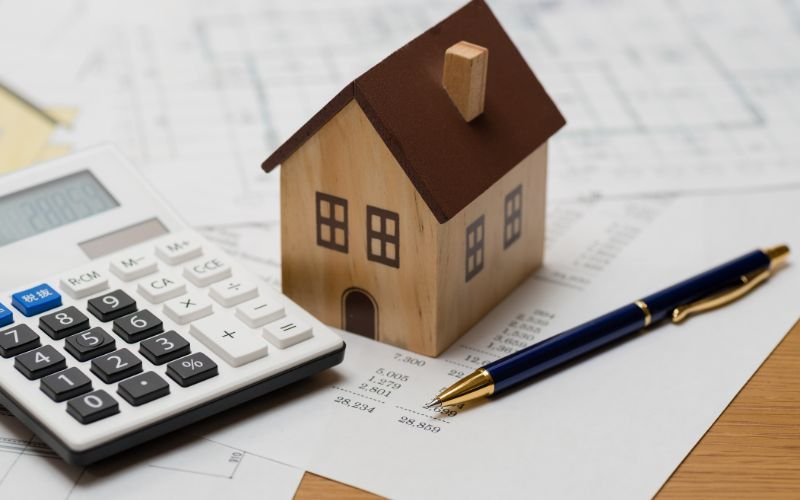Aussies planning to build or renovate their homes will face higher hurdles in 2023 as experts predict a long-term construction cost hike. Labour shortage and rising material costs after the COVID-19 pandemic and the Russo-Ukranian War are primary drivers of the increasing costs as felt by the slowing construction industry.
Global and international factors (health, conflict, etc.) disrupt Australia’s construction supply chain, causing a shortage of many essential building equipment, materials, and commodities. The health crisis and border closures also set a steep obstacle for skilled labour, choking the country’s increasing housing demand.
With these obstacles in mind, many home builders and renovators are left asking whether building costs will drop in 2023. In this post, we’ll analyse the data and factors pointing to the direction of construction costs in the long term.
Global Inflation and Interest Rates Impact Costs
Inevitably, the COVID-19 pandemic drove housing demand upwards due to stay-at-home shocks. A Macroeconomic Analysis study at the Australian National University pointed out the increased time spent at home and expenses spent for at-home goods as driving forces for the rising housing demand.
But in a post-pandemic economy, Australia faces rising interest rates, inflation, and prevalent shortage of skilled workers and construction materials as lasting effects of the pandemic and the Ukraine war. Those events massively disrupt the building industry to a pedestrian pace, contributing to its slow decline.
Furthermore, the Australian cash rate reached a 10-year record high of 3.60% in March 2023, with inflation reaching 7.8%. Add that to the Russo-Ukrainian war blocking the global supply chain of commodities, materials, fuel, and food. we can expect Austraila’s construction industry to take a hit.
Australia’s Slow Population Growth Impact Housing Demand
The COVID-19 pandemic blew a hole in Australia’s population goal after closing 2021 with a 0.1% population growth a steep drop from last year’s 1.6%. But despite recording a population growth crater, construction did not slow down.
The Australian Bureau of Statistics reported that cost changes for new houses from approval to completion could reach up to $108,410, a 33% increase from the cost upon approval. Constructing new townhouses can cost up to 50.5% more than the approval cost whopping $124,240.
Additionally, cost changes for apartment building can go up to $166,039, a +73.6% change from the approval cost. That means customers within the low end of the construction spectrum will likely take the most damage and challenge from cracking the property market.
Interest rate hikes are also responsible for slowing down property construction and renovation. But the building industry did not stop at a standstill, it only slowed down amidst high demands, thereby driving its cost upwards.
While construction firms need more skilled labour, Australian regulations limit firms from hiring overseas. Border closures also leave Australia with a limited workforce and operate below optimal capacities, slowing construction and increasing expenditures.
Undersupply in Materials and Logistics Raise the Price Bar
Australia feels the impact of national policies from overseas suppliers and global markets. For instance, China’s aggressive pursuit of its zero-COVID strategy strained material supplies as lockdowns limited labour and production of construction materials and home electronics.
Since global manufacturing is not producing peak results, fewer products enter Australia’s construction market. As China maintains low production to compensate for its zero-COVID strategy, Australian firms expect longer delivery times for all construction materials, including switchboards, lifts, substations, and electronic control systems. This also leads to increased costs for local businesses such as home builders and electrical and waste removal contractors.
On the other hand, global shipping leader Maersk predicts ease in shipping services as the supply outweighs demand. Lower global production means fewer shipping containers, leading freight services to take action.
Shipping costs declined in 2022 as freight companies predict a continuing global recession well into 2023. Freight analytics reported a 21% drop in shipping rates last November’s equivalent to $2,607/FEU.
That could mean good news for the price alone. But the bigger picture suggests a massive shortage for Australia’s import-dependent industries, including construction.
For example, Australia’s steel supply throughout 2022 saw a massive fluctuation. Steel is among the country’s top export commodities, but as market countries pose a weak demand in 2023, experts predict an oversupply of low-grade steel in Australia.
This may impact the prices of steel but will negatively affect Australia’s economy, leading to a net increase in construction costs as we take other factors into account.
On the other hand, timber stocks began normalising in 2022. As more timber species become available, the commodity’s supply and demand dynamics start to balance off, but prices are yet to catch up.
Final Thoughts
It’s crucial to look at the global economy and international affairs to determine whether Australia’s construction costs will drop in 2023. As labour shortage and logistical obstacles remain standing, we can expect an oversupply of construction materials but a lack of skilled labour to mobilise operations.
Logistics and freight companies anticipate a global recession, along with Australia’s record-high cash rate and rising interest rates. Considering those factors, we can predict that building costs will not go down in 2023 and for the long term.
There may be stages where construction costs will decrease, says Nan Chul Shin, a construction owner in Hawaii. But as long as global inflation continuously increases with rising international tension, logistics, and building supply, building or renovating a home in Australia will cost more than the approved price.
